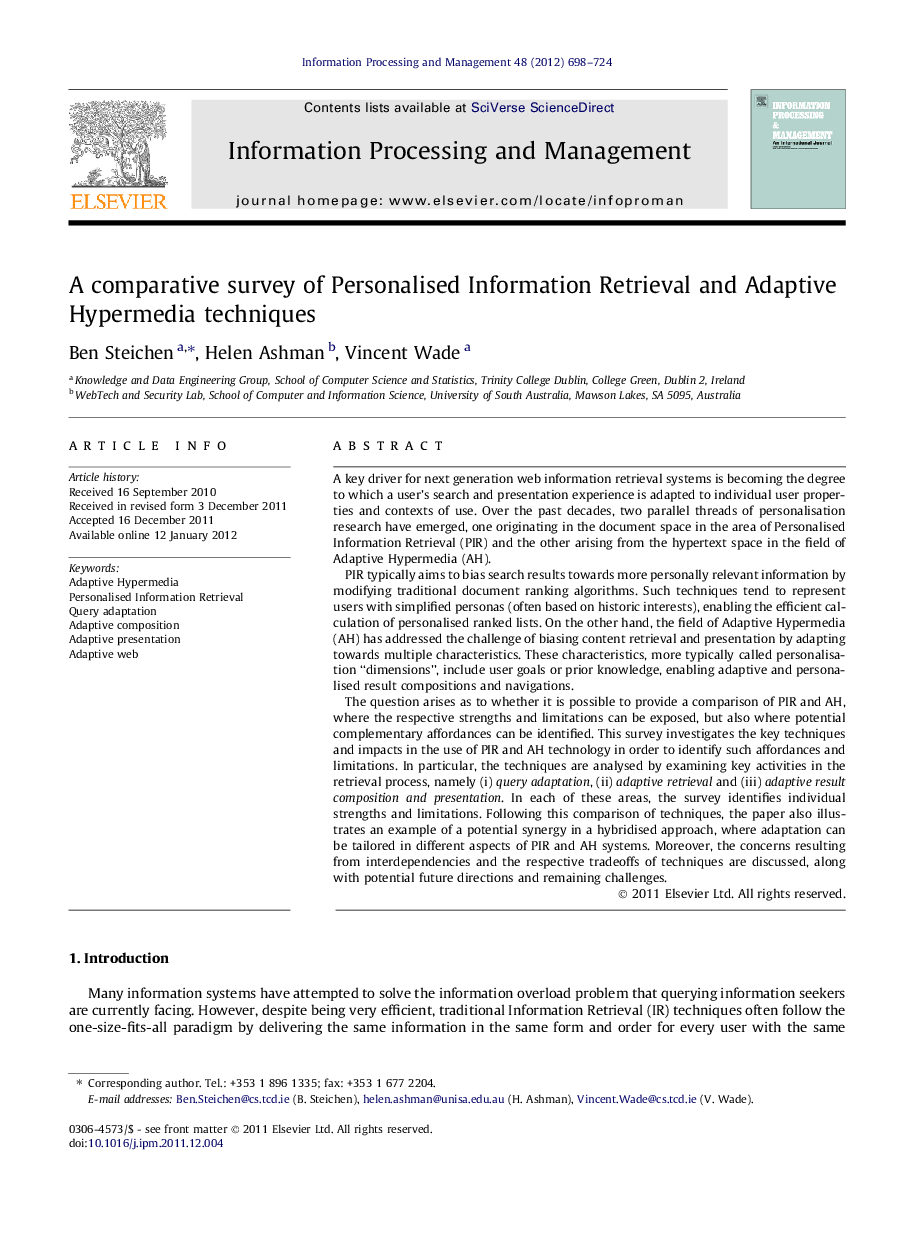| Article ID | Journal | Published Year | Pages | File Type |
|---|---|---|---|---|
| 515432 | Information Processing & Management | 2012 | 27 Pages |
A key driver for next generation web information retrieval systems is becoming the degree to which a user’s search and presentation experience is adapted to individual user properties and contexts of use. Over the past decades, two parallel threads of personalisation research have emerged, one originating in the document space in the area of Personalised Information Retrieval (PIR) and the other arising from the hypertext space in the field of Adaptive Hypermedia (AH).PIR typically aims to bias search results towards more personally relevant information by modifying traditional document ranking algorithms. Such techniques tend to represent users with simplified personas (often based on historic interests), enabling the efficient calculation of personalised ranked lists. On the other hand, the field of Adaptive Hypermedia (AH) has addressed the challenge of biasing content retrieval and presentation by adapting towards multiple characteristics. These characteristics, more typically called personalisation “dimensions”, include user goals or prior knowledge, enabling adaptive and personalised result compositions and navigations.The question arises as to whether it is possible to provide a comparison of PIR and AH, where the respective strengths and limitations can be exposed, but also where potential complementary affordances can be identified. This survey investigates the key techniques and impacts in the use of PIR and AH technology in order to identify such affordances and limitations. In particular, the techniques are analysed by examining key activities in the retrieval process, namely (i) query adaptation, (ii) adaptive retrieval and (iii) adaptive result composition and presentation. In each of these areas, the survey identifies individual strengths and limitations. Following this comparison of techniques, the paper also illustrates an example of a potential synergy in a hybridised approach, where adaptation can be tailored in different aspects of PIR and AH systems. Moreover, the concerns resulting from interdependencies and the respective tradeoffs of techniques are discussed, along with potential future directions and remaining challenges.
► Surveys key techniques and impact of personalised IR and adaptive web. ► Analyses strengths and potential of integrating personalised IR and adaptive web. ► Identifies key innovations for web-scale personalisation.
